Get To Know The Coast Guard's New Heritage Class Cutter

USCGC Argus, the first of the U.S. Coast Guard’s future Heritage class cutters, was launched last week in Panama City, Florida. The event represents an important step towards fielding this new cutter class — which will replace the Coast Guard's aging medium-endurance cutters that currently form the backbone of the service's cutter fleet. With the Coast Guard increasingly tasked with conducting activities far beyond U.S. shores, as well as facing ever increasing challenges closer to home, having access to all-new medium-range cutters will be of benefit to it in the decades to come.
https://twitter.com/WarshipCam/status/1718002783469859177?s=20
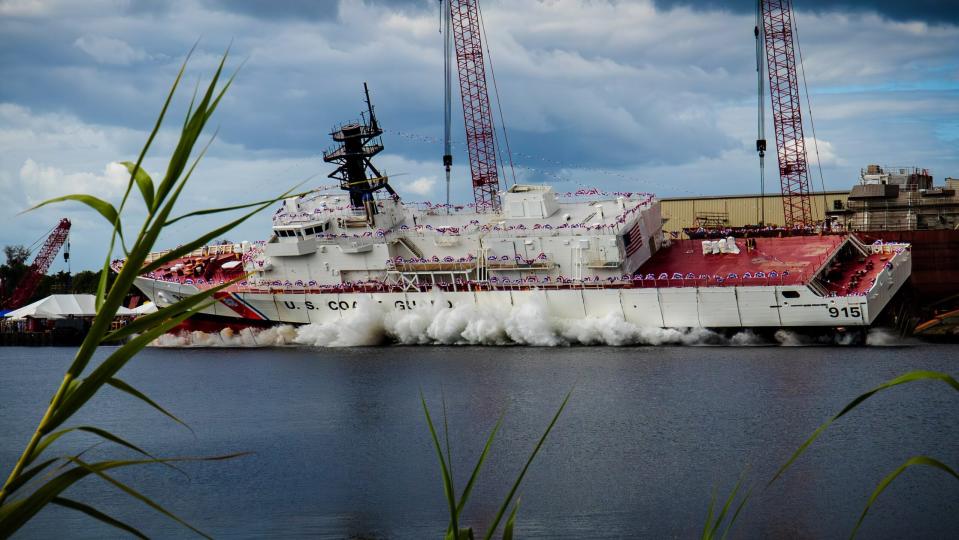
The first four Heritage class Medium Endurance Offshore Patrol Cutters (OPCs) — including the aforementioned class leader USCGC Argus alongside USCGC Chase, Ingham, and Rush — are being produced by the Eastern Shipbuilding Group in Florida. Austal USA in Mobile, Alabama, will build a further maximum of 11 OPCs, the first of which has been named USCGC Pickering. The Coast Guard’s program of record (POR), which dates to 2004, calls for procuring 25 Heritage class OPCs to eventually replace the service’s array of geriatric medium-endurance cutters. Those vessels comprise 13 Famous class and 13 Reliance class ships — three Reliance class vessels, USCGC Courageous, Durable, and Decisive, have already been decommissioned.
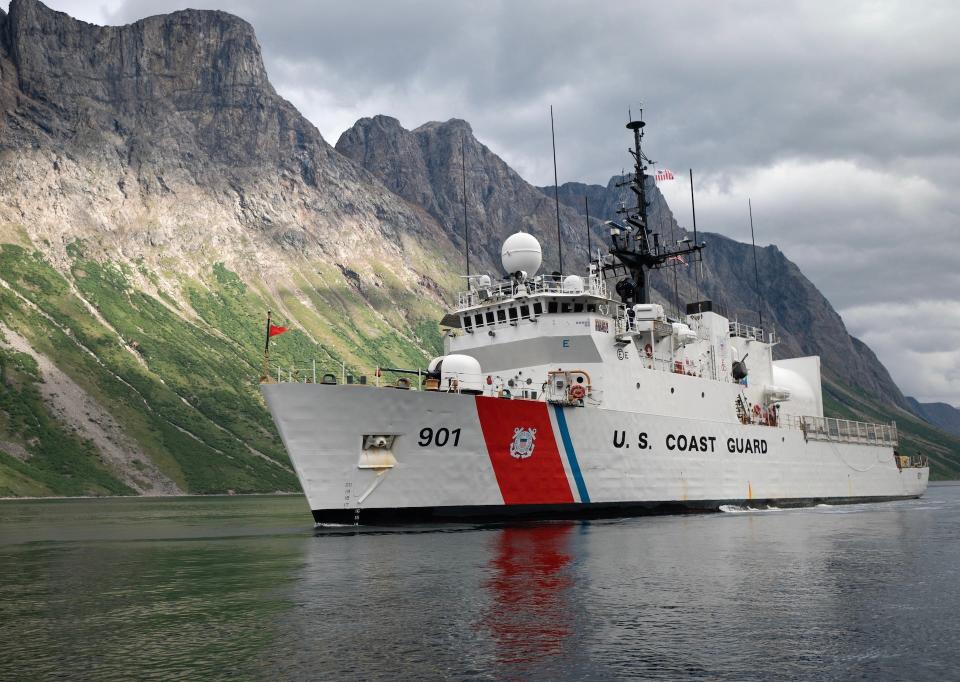
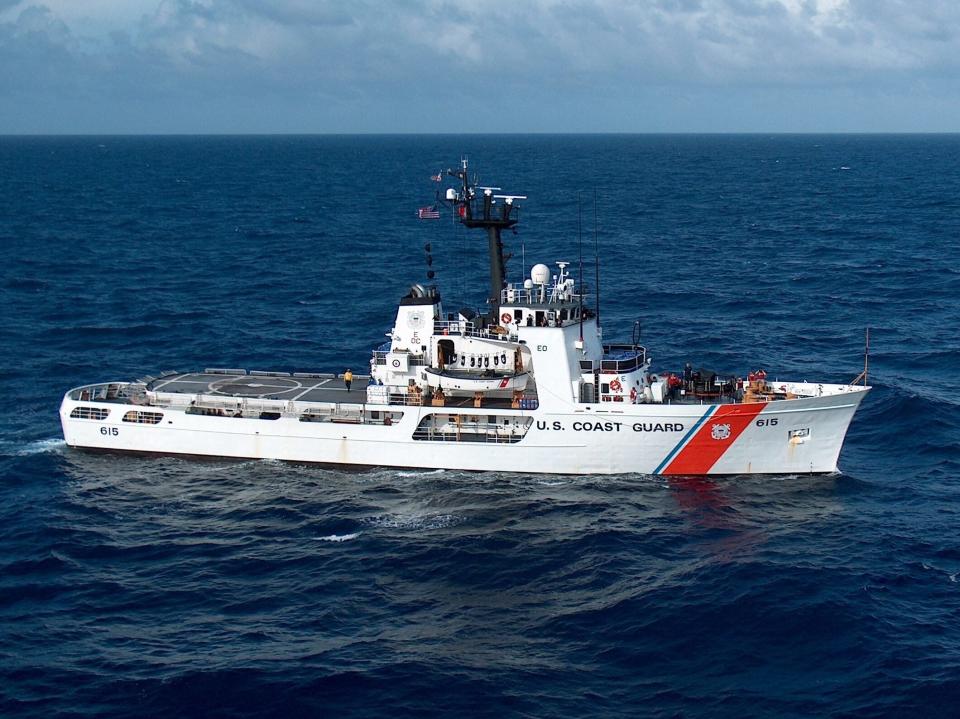
According to a recent report by the Congressional Research Service (CRS), Heritage class OPCs are expected to have a full displacement of some 4,500 tons — a substantial increase over earlier estimates ranging from 3,500 to 3,700 tons. The 4,500 ton figure would put the vessels on par with the displacement weight of the service’s largest, and most capable, Legend class National Security Cutters (NSCs). The equivalent displacement figures for Famous class and Reliance class vessels are just over 1,800 tons and 1,100 tons, respectively.
The new Heritage class OPCs will measure 360 feet long, and will have beams measuring nearly 54 feet and drafts measuring nearly 17 feet. As such, they are set to be larger than the medium-endurance cutters they are replacing, but smaller than the Legend class NSCs. Famous class and Reliance class cutters are 270 and 210 feet long, respectively, while the Legend class ships measure 418 feet long.
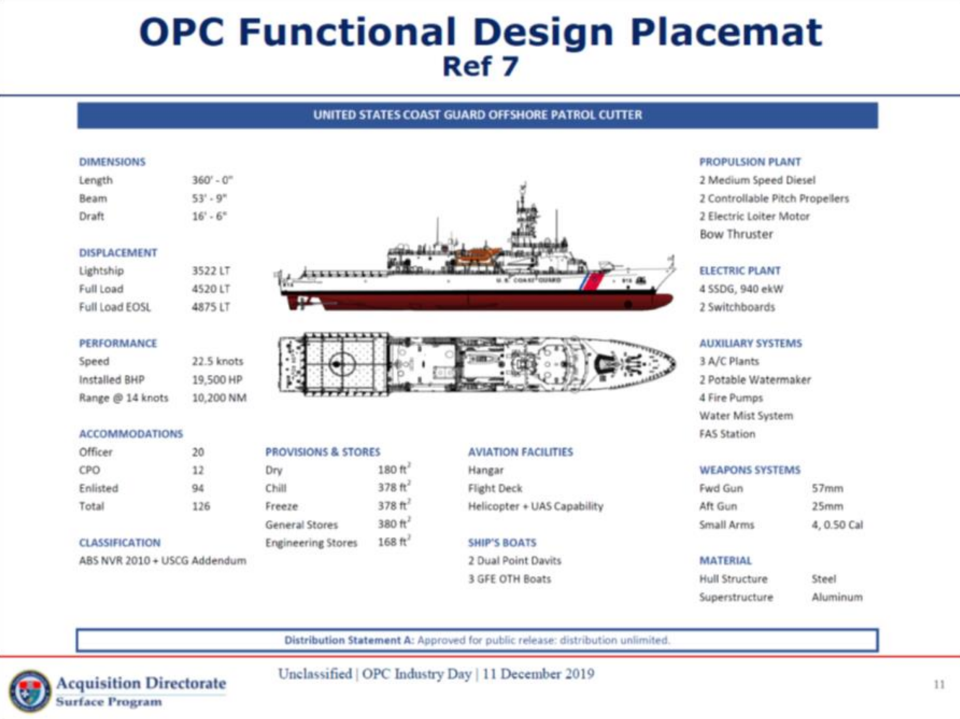
USCGC Argus, Chase, Ingham, Rush, and Pickering will be powered by two 7,280 kilowatt (9,760 horsepower) Fairbanks Morse diesel engines. According to the Coast Guard, the vessels will likely be able to achieve a maximum sustained speed of 22.5 knots (just under 26 miles per hour), with a range of 10,200 nautical miles at 14 knots (roughly 16 miles per hour). The OPCs will also feature a 60 day endurance time. In comparison, the long-endurance Legend class NSCs can operate at 60 or 90-day cycles, while the smaller Sentinel class Fast Response Cutters (FRCs) have an endurance time of just five days.
The service has also stressed that Heritage class OPCs will feature advanced technology, not found on aging medium-range cutters, including the AN/SLQ-32C(V)6, or 'SEWIP Lite,' electronic warfare suite for early detection, analysis, threat warning, and protection from anti-ship missiles. Expendable Mk 53 Mod 10 Nulka decoys will also be on hand to help in evading an anti-ship missile attack.
In terms of radars and sensors, the cutters will boast Saab's Sea Giraffe AN/SPS-77 AMB multi-mode naval radar, the AN/UPX-46 identification friend-or-foe (IFF) system, the AN/URN-32 tactical air navigation (TACAN) system, the MK 20 Mod 1 Electro-Optical Sensor System (EOSS), and Link 22 Tactical Data Links.
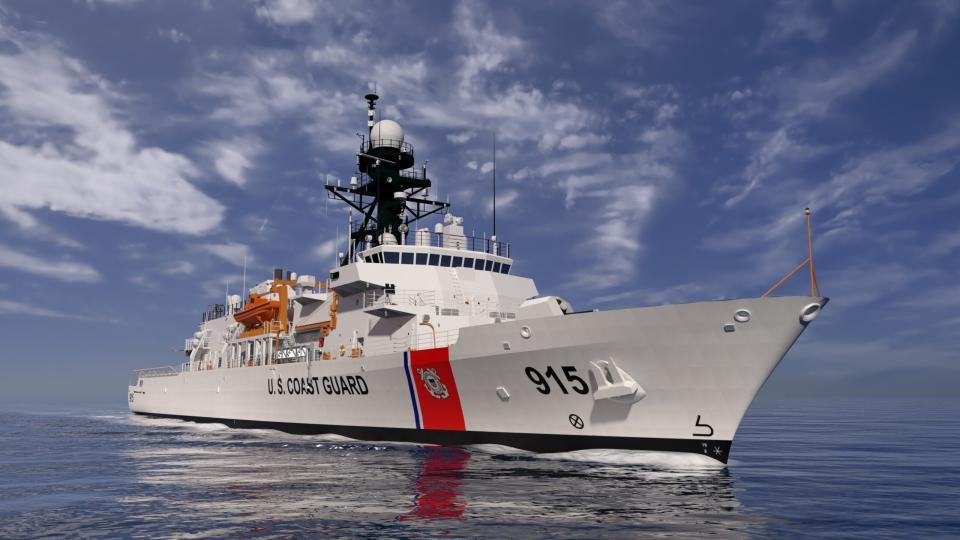
Each Heritage class OPC will boast a Mark 110 57mm Bofors rapid-fire gun in a turret on the bow, and a Mark 38 MOD 3 25mm autocannon over the helicopter hangar. They will also feature a number of crewed machine guns.
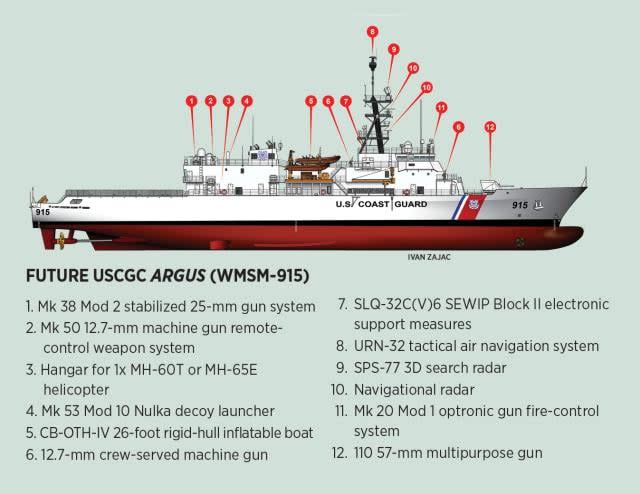
Heritage class OPCs will be able to facilitate MH-60 Jayhawk and MH-65 Dolphin helicopter deployments, thanks to their rear helicopter deck and hangar — which can accommodate a range of aircraft — as well as uncrewed aircraft systems (UAS). The vessels will also be equipped with two dual-point davits to lower rigid-hull inflatable boats (RHIB) into the ocean, which, along with MH60T helicopters, are frequently used for boarding, search, and seizure operations.
As for crew size, each cutter will be able to accommodate up to 126 personnel. This represents an increase in the crew size of Famous and Reliance class vessels, which have capacity for 100 and 75 crew members respectively.
For the Coast Guard, Heritage class OPCs will eventually provide the majority of the service's offshore cutter presence. They will comprise the critical midrange capability in its layered defense concept, bridging the gap between the Legend class NSCs — which patrol the open ocean — and the smaller Sentinel class FRCs — which serve closer to the shore.
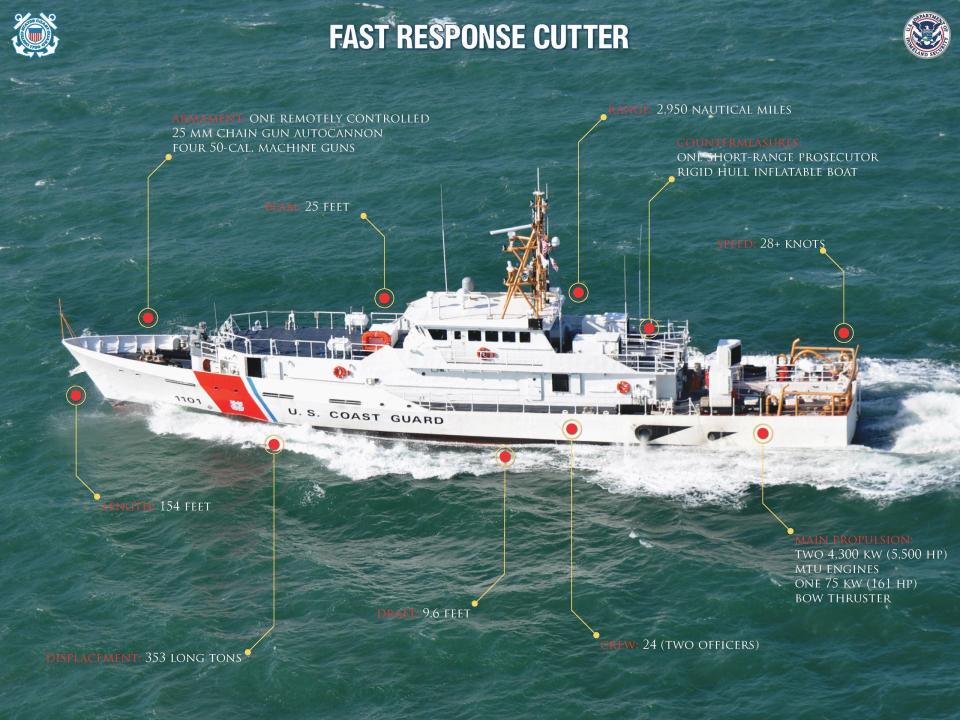
Once operational, the service notes, the multi-mission ships will be used in support of regulating new Arctic shipping routes and natural resources, due to receding ice accelerated by climate change. They will also be used for search and rescue, the protection of living marine resources, drug/migrant trafficking interdiction, disaster response efforts, and for providing general security. Many of these tasks are all presently performed by the service’s medium-endurance cutters. Due to their communications and networking abilities, as well as other combat systems, they will also be able to work more closely with U.S. Navy assets, as well.
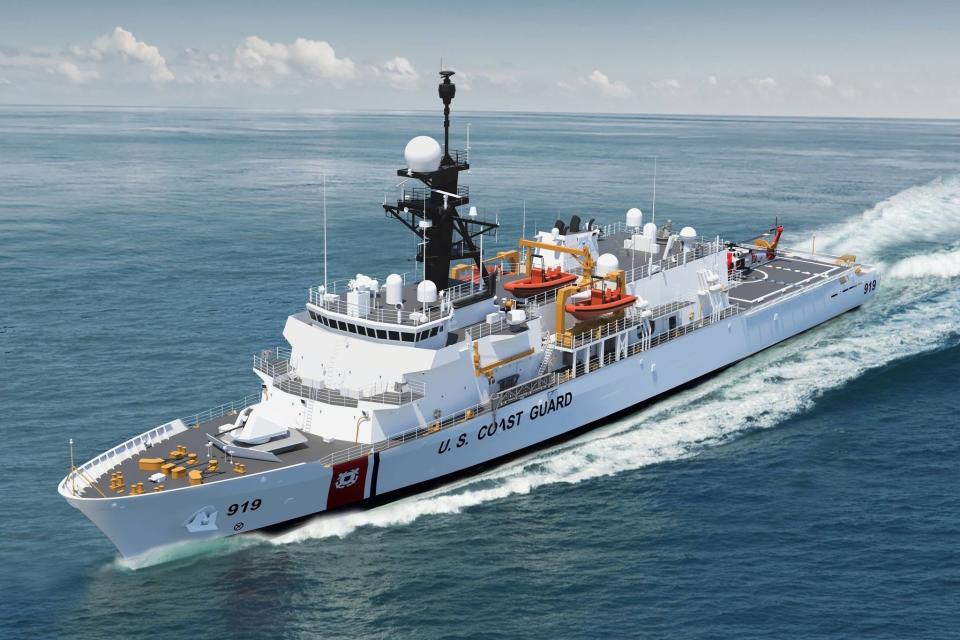
Given that both the service's Legend class NSCs and medium-endurance cutters have increasingly been used to support activities beyond the shores of the U.S. in recent years — including in Europe as well as in various parts of the Indo-Pacific — having access to new, medium-sized cutters will allow the service to bolster its capabilities in those, and other, regions. For missions in higher-risk areas, the Coast Guard will likely still deploy its most capable Lengend class NSCs with its greater defensive capabilities.
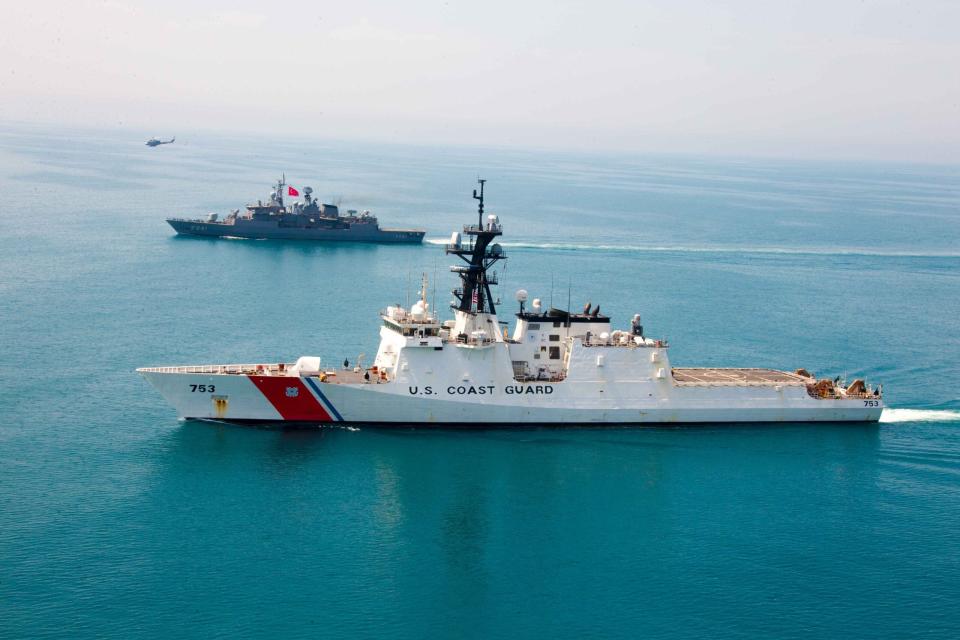
"The OPC is one of the Service's highest acquisition priorities and is absolutely vital to recapitalizing the capability provided by our legacy... Medium Endurance Cutters," Adm. Linda L Fagan, commandant of the USCG, indicated at the launch of Argus last week, as Shepard Media reports.
Despite this, delays have pushed initial projected Heritage class OPC deliveries to the right. Steel cutting for USCGC Argus began in January 2019, with plans previously in place for the ship's delivery to the Coast Guard in 2022. Delays of a year and a half have been added to the delivery times of all four Heritage class OPCs being produced by Eastern Shipbuilding Group, largely because of the impact of Hurricane Michael in 2018 and later the COVID-19 pandemic. However, the Government Accountability Office (GOA) has pointed to other issues affecting the potential delivery of those initial cutters, notably regarding their dual-point davits.
In terms of the notional completion times for the 25 Heritage class OPCs, the CRS indicates that current estimates are generally between 10 to 24 months later than Coast Guard estimates of pre October 2019. Cutters one through seven are projected to be built at a rate of one per year, with the seventh completing construction in FY2028. The remaining vessels, i.e. ships eight through 25, will be built at a rate of two per year, with the eighth completing construction in FY2029 and the twenty-fifth completing construction in FY2038.
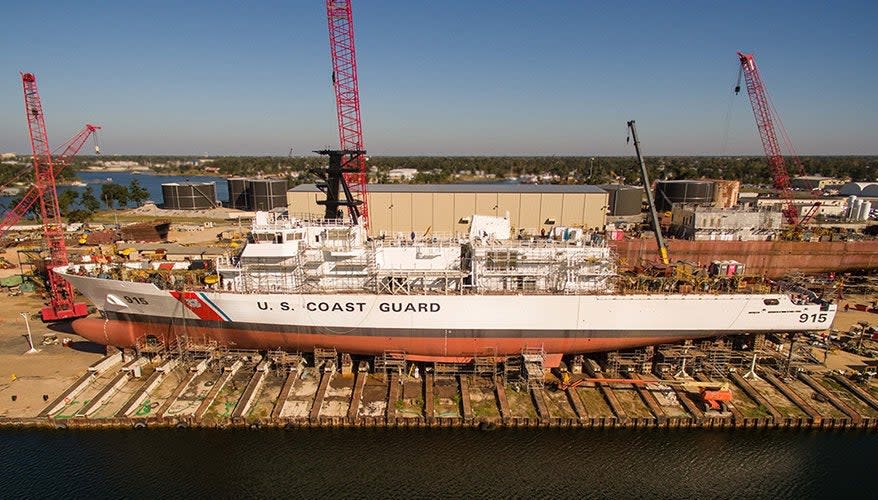
Due to the advanced age of the Coast Guard's legacy medium-endurance cutters, this all places greater strain on those ships going forward. The first-in-class USCGC Reliance was commissioned in 1964, and the first Famous class cutter, USCGC Bear, was commissioned in 1983.
While the service has made investments to modernize its legacy medium-sized cutter fleet — upgrade work on a number of Famous class cutters, as part of the class’ service life extension program (SLEP), is set to continue through 2028, for example — those vessels are on their way to becoming technologically obsolete.
On top of delivery delays, and their knock-on implications, questions have also been raised on how cost-effective procurement of the Heritage class OPCs has been to this point. According to a GOA report from June of this year on Coast Guard acquisitions, the total acquisition cost estimate for the class from 2012, as of 2022, was $17.6 billion. All included, this, on average, equates to around $704 million per ship for the eventual goal of 25 Heritage class OPCs, according to the CRS. By comparison, Legend class NSCs have an estimated average procurement cost of about $670 million per ship. The Navy's Littoral Combat Ships (LCSs), in addition, have a similar cost. Moreover, the Coast Guard’s FY2024 budget request seeks $579 million in procurement funding for the construction of the sixth vessel, the procurement of long-lead times for the seventh, as well as other program costs.
It is interesting that the costs and displacement are now similar between the Legend class and the Heritage class, which may make some question the procurement logic. We will talk about this issue in an upcoming piece.
Despite the delays and budget concerns, the Coast Guard takes a long view with regard to the eventual deployment of the vessels. It’s been reported that the service lives of the cutters will be around forty years — which, given current estimated completion times, would push their usability well into the late twenty first century.
Contact the author: oliver@thewarzone.com

